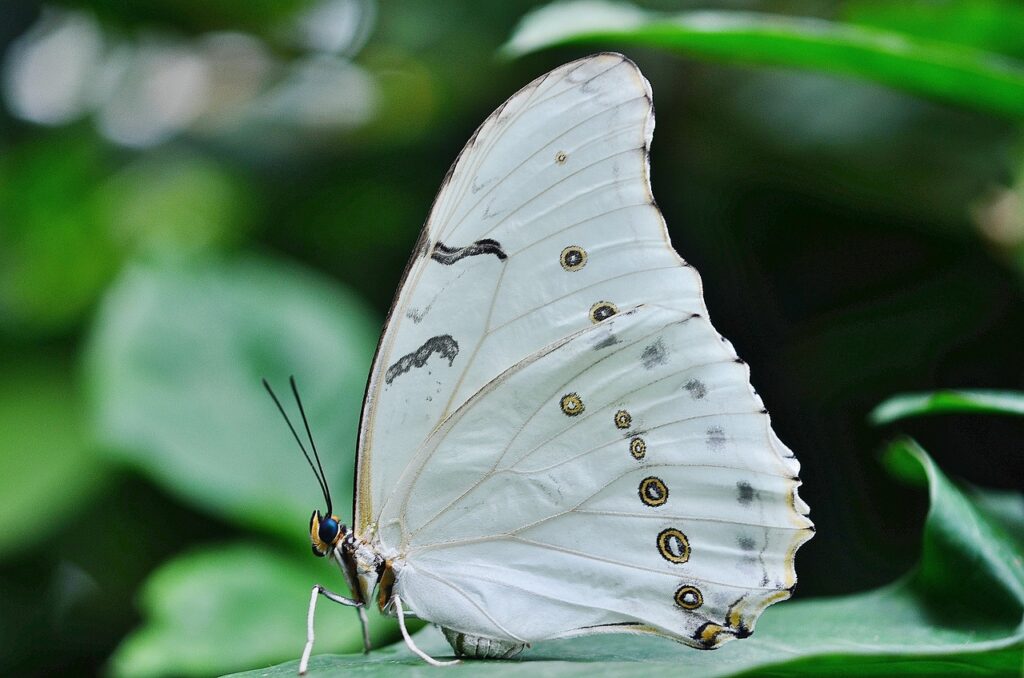White morpho
Morpho polyphemus

Length

12 cm
weight

5 g
Lifespan

3 months
The white morpho butterfly can be distinguished by the fact that both its upper and lower wings are bright white, with some light brown markings, albeit very small. On the underside of the hind wings is a row of small eyespots.
General characteristics
The morpho polyphemus can be distinguished from other morphos by their delicate pearly bright white colour. They can also be distinguished by the sharp teeth on the hindwing. The flight of this species is very fast and irregular, and it can climb up to 1200m.
Feeding
The caterpillar is known to feed on Paullinia pinnata and Inga, which are two types of plants found in South America.
Behaviour
It is often found very close to the ground in villages and high in the treetops in forests.
Reproduction
Like all butterflies, they go through four distinct stages of metamorphosis. The cycle begins when the female lays eggs on the leaves of the host plant. When the eggs hatch, larvae or caterpillars emerge, feed on the leaves of the plant and go through several molting stages before becoming chrysalises.
During the chrysalis stage, the caterpillar metamorphoses into an adult butterfly. The metamorphosis process lasts several weeks and culminates in the emergence of the adult butterfly.
Threats
Like most butterflies, their main threat is the alteration of their natural habitat, such as logging, among others.
Distribution
This species is distributed from Mexico to Guatemala and Nicaragua, although occasionally it can also be found in Panama.

Did you know?
These butterflies fly from May to November.
This species is named after Polyphemus, the one-eyed son of Poseidon and Thoosa, because of the small eye-spots on its wing.
It is one of the few morphs that is white instead of blue.
Conservation status
